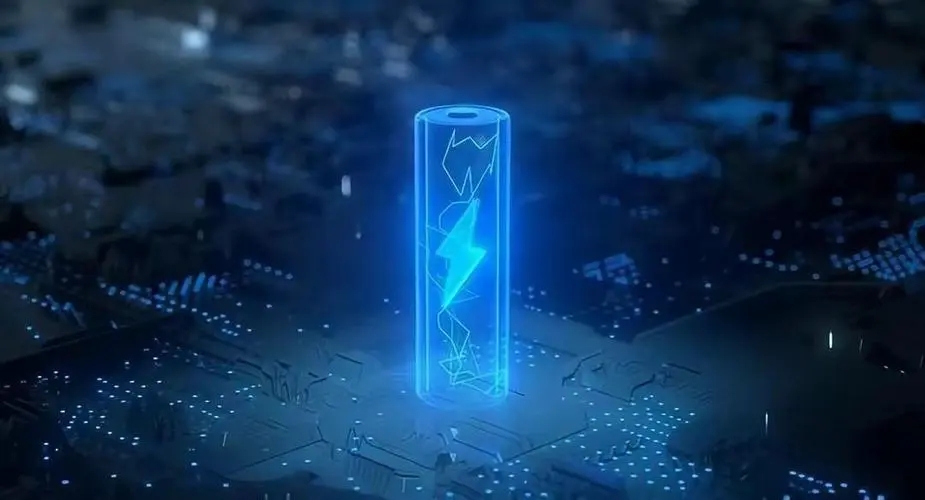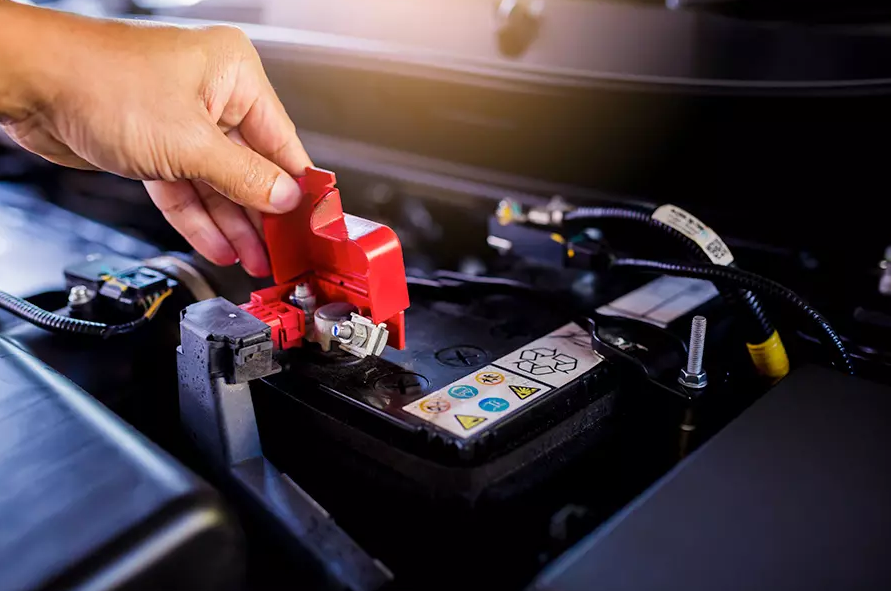Fortschritte bei Elektrofahrzeugen mit niedriger Geschwindigkeit: Die Lithiumbatterietechnologie übernimmt die Führung
In recent years, there has been a significant shift towards eco-friendly transportation options, and low-speed electric vehicles (LSEVs) have emerged as a promising alternative. These vehicles are designed for short-distance commutes and are particularly popular in urban areas where congestion and pollution are major concerns. One key factor that has contributed to the increasing popularity of LSEVs is the advancements in lithium battery technology, which has greatly improved their performance and range.
LSEVs are typically powered by batteries that provide electrical energy to the motor, enabling the vehicle to move. Over the years, various battery technologies have been used in LSEVs, including lead-acid batteries, nickel-metal hydride (NiMH) batteries, and lithium-ion batteries. However, lithium battery technology has emerged as the frontrunner due to its superior characteristics and advantages.
One of the main advantages of lithium batteries is their energy density. Lithium-ion batteries have a much higher energy density compared to lead-acid and NiMH batteries, meaning they can store more energy in a smaller and lighter package. This translates to increased range and longer operating time for LSEVs. With advancements in lithium battery technology, LSEVs can now travel further distances on a single charge, making them more practical for daily commuting.
In addition to higher energy density, lithium batteries also have a longer lifespan compared to other battery types. Lead-acid batteries, for example, tend to degrade quickly and require frequent replacements. On the other hand, lithium batteries can last for several years, reducing the overall maintenance cost of LSEVs. This improved longevity makes LSEVs a more sustainable and cost-effective transportation solution.
Furthermore, lithium batteries offer faster charging times, which is a significant advantage for LSEV owners. With advancements in charging infrastructure, it is now possible to charge a lithium battery to full capacity in just a few hours. This means LSEV owners can conveniently recharge their vehicles overnight or during short breaks, allowing for uninterrupted usage during the day.
Another crucial aspect of lithium battery technology is its environmental impact. Unlike lead-acid batteries, lithium batteries do not contain hazardous materials such as lead and sulfuric acid, making them safer to handle and dispose of. Additionally, lithium batteries are highly recyclable, reducing the environmental footprint of LSEVs. This aligns with the overall goal of eco-friendly transportation and contributes to a cleaner and greener environment.
The advancements in lithium battery technology have not only improved the performance of LSEVs but also expanded their applications. Today, LSEVs are not limited to golf courses or gated communities; they are increasingly being used for various purposes such as food delivery, campus transportation, and urban commuting. The enhanced range and durability provided by lithium batteries have made LSEVs a viable option for a wide range of users.

While lithium battery technology has taken the lead in LSEVs, it is important to note that there are ongoing efforts to further improve battery performance and sustainability. Researchers are exploring new materials and designs to enhance energy storage capabilities and reduce production costs. Additionally, advancements in battery management systems and smart charging technologies are being developed to optimize battery usage and prolong lifespan.
In conclusion, advancements in lithium battery technology have revolutionized the low-speed electric vehicle industry. With their higher energy density, longer lifespan, faster charging times, and environmental benefits, lithium batteries have become the preferred choice for powering LSEVs. As technology continues to advance, we can expect even more exciting developments in the field of low-speed electric vehicles, making them an increasingly attractive and sustainable transportation option for the future.
-
 Lithium Iron Phosphate (LiFePO4) batteries have a number of remarkable performance characteristics due to their unique chemical composition and structure. The following is an analysis of the main unique characteristics of Lithium Iron Phosphate batteries: 1. High safety The positive electrode material of lithium iron phosphate batteries, lithium iron phosphate, has high chemical stability, and the P-O bond in its...Weiterlesen
Lithium Iron Phosphate (LiFePO4) batteries have a number of remarkable performance characteristics due to their unique chemical composition and structure. The following is an analysis of the main unique characteristics of Lithium Iron Phosphate batteries: 1. High safety The positive electrode material of lithium iron phosphate batteries, lithium iron phosphate, has high chemical stability, and the P-O bond in its...Weiterlesen -
 Elektroroller erfreuen sich in den letzten Jahren aufgrund ihres Komforts und ihrer Nachhaltigkeit großer Beliebtheit. Diese Fahrzeuge sind nicht nur umweltfreundlich, sondern bieten auch eine hervorragende Alternative zu herkömmlichen Transportmitteln. Eine der Schlüsselkomponenten, die Elektroroller antreiben, ist die Batterie. In diesem Artikel werden wir die Bedeutung von Elektrorollerbatterien und ihren Beitrag untersuchen...Weiterlesen
Elektroroller erfreuen sich in den letzten Jahren aufgrund ihres Komforts und ihrer Nachhaltigkeit großer Beliebtheit. Diese Fahrzeuge sind nicht nur umweltfreundlich, sondern bieten auch eine hervorragende Alternative zu herkömmlichen Transportmitteln. Eine der Schlüsselkomponenten, die Elektroroller antreiben, ist die Batterie. In diesem Artikel werden wir die Bedeutung von Elektrorollerbatterien und ihren Beitrag untersuchen...Weiterlesen -
 Das Anlassen Ihrer Schiffsbatterie ist ein entscheidender Aspekt beim Bootfahren, insbesondere wenn Sie auf dem Wasser sind und Ihren Motor starten müssen. Allerdings kann das Anlassen Ihrer Schiffsbatterie manchmal schwierig und herausfordernd sein, insbesondere wenn Sie ein unerfahrener Bootsfahrer sind. In diesem Artikel geben wir Ihnen einige Tipps und Tricks, wie Sie Ihr Boot ankurbeln...Weiterlesen
Das Anlassen Ihrer Schiffsbatterie ist ein entscheidender Aspekt beim Bootfahren, insbesondere wenn Sie auf dem Wasser sind und Ihren Motor starten müssen. Allerdings kann das Anlassen Ihrer Schiffsbatterie manchmal schwierig und herausfordernd sein, insbesondere wenn Sie ein unerfahrener Bootsfahrer sind. In diesem Artikel geben wir Ihnen einige Tipps und Tricks, wie Sie Ihr Boot ankurbeln...Weiterlesen -
 In today's fast-paced world, we heavily depend on various electronic devices to stay connected and get our work done. From smartphones and laptops to electric vehicles and home appliances, these devices have become an integral part of our daily lives. However, the reliability and efficiency of these devices largely depend on the quality of the batteries powering them. That's where...Weiterlesen
In today's fast-paced world, we heavily depend on various electronic devices to stay connected and get our work done. From smartphones and laptops to electric vehicles and home appliances, these devices have become an integral part of our daily lives. However, the reliability and efficiency of these devices largely depend on the quality of the batteries powering them. That's where...Weiterlesen -
 Introduction Security monitoring equipment plays a crucial role in ensuring the safety of people and assets in various environments. With the advancement in technology, lithium battery-powered security monitoring equipment has gained significant popularity due to its numerous advantages. This article aims to explore the features, benefits, and applications of lithium battery-powered security monitoring equipment. Features of Lithium Battery-Powered Security...Weiterlesen
Introduction Security monitoring equipment plays a crucial role in ensuring the safety of people and assets in various environments. With the advancement in technology, lithium battery-powered security monitoring equipment has gained significant popularity due to its numerous advantages. This article aims to explore the features, benefits, and applications of lithium battery-powered security monitoring equipment. Features of Lithium Battery-Powered Security...Weiterlesen -
 As an important branch of lithium-ion battery, lithium iron phosphate battery has occupied a place in the new energy field with its unique safety and stability. However, with the rapid development of new energy technologies and the intensification of market competition, we can't help but ask: Is lithium iron phosphate battery really a reliable choice in the new energy field?...Weiterlesen
As an important branch of lithium-ion battery, lithium iron phosphate battery has occupied a place in the new energy field with its unique safety and stability. However, with the rapid development of new energy technologies and the intensification of market competition, we can't help but ask: Is lithium iron phosphate battery really a reliable choice in the new energy field?...Weiterlesen -
 When it comes to owning a car, one of the most important things you need to consider is the battery. This is because it is responsible for starting the engine and powering all the electrical systems in your vehicle. Therefore, it is essential to choose a reliable car starter battery that can meet your needs. In this article, we...Weiterlesen
When it comes to owning a car, one of the most important things you need to consider is the battery. This is because it is responsible for starting the engine and powering all the electrical systems in your vehicle. Therefore, it is essential to choose a reliable car starter battery that can meet your needs. In this article, we...Weiterlesen

